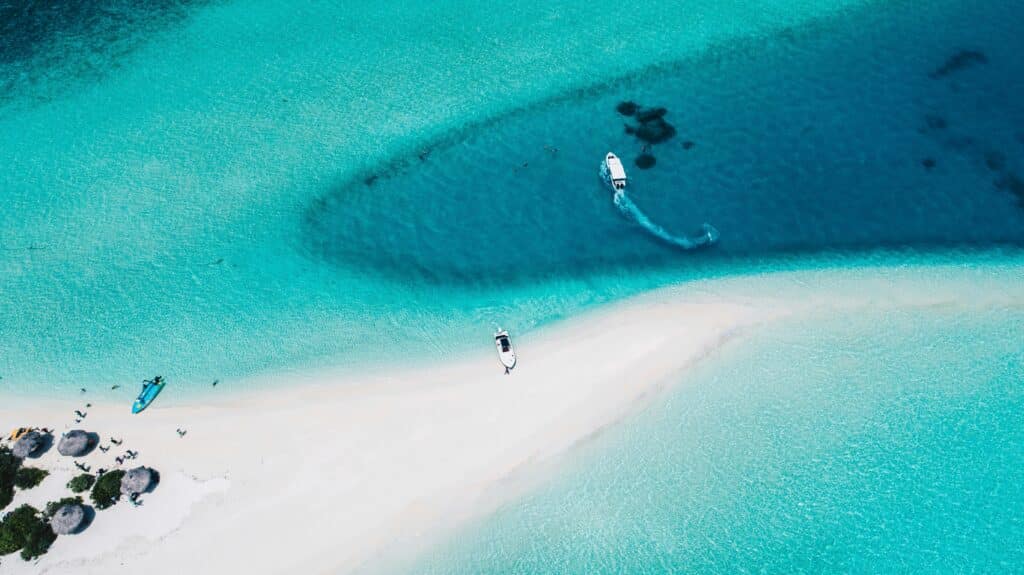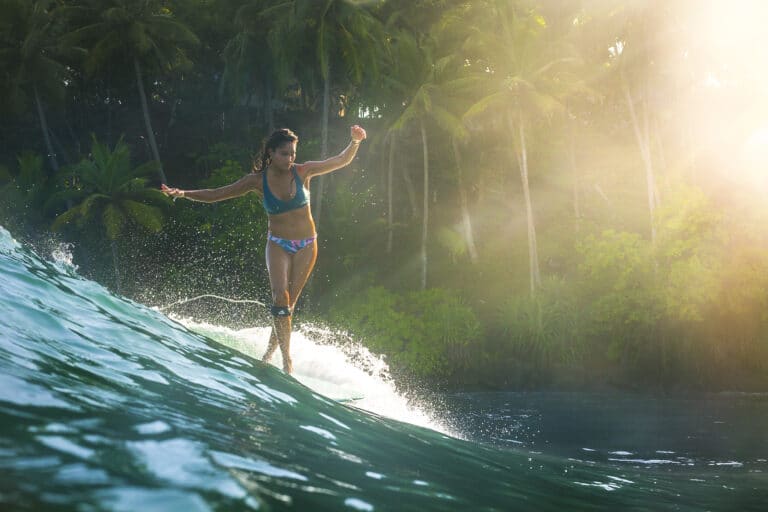
What travel vaccines do I need?
What Travel Vaccines Do I Need as a Canadian Traveler? Traveling is life’s greatest joys! However, exploring the world can sometimes expose you to health

The Maldives, a tropical heaven in the heart of the Indian Ocean, is renowned for its pristine white-sand beaches, crystal-clear turquoise waters, and vibrant coral reefs. This archipelago of 26 atolls is a dream destination for travelers all around the world. Cam and I had the chance to spend 2 fantastic weeks in the Maldives before coming back home from our 14 months trip. Before you embark on your journey to this paradise on Earth, here are 10 things you should know from our own experience about traveling in the Maldives.
While opulent resorts are the primary draw for many visitors, staying on a local island provides a more authentic experience. It allows you to interact with the friendly locals, explore the Maldivian culture, and witness daily life. Resorts are way more expensive than local islands, so that’s something to keep in mind if you travel on a budget.

The Maldives is an Islamic country, and it’s essential to be aware of and respect local customs and traditions. Dress modestly when outside resort areas, especially on local islands, and be mindful of prayer times. For women foreigners, it’s tolerated to wear shorts and t-shirt. Alcohol is only permitted on resort islands or on floating bar boats. The floating bar boats are boats in the ocean, reachable in less than 5 minutes by speedboat, where alcohol is permitted. It is not a good idea to try to bring alcohol from home in your luggages, since all the bags are screened on arrival and the alcohol is confiscated.
In the Maldives, where Islamic customs and traditions are prevalent, there are designated areas known as “Bikini Beaches” where tourists can wear swimwear without offending local sensibilities. If you plan to explore local islands, it’s essential to be aware of and adhere to the local regulations regarding dress code. In many cases, wearing revealing swimwear outside designated areas on local islands is discouraged or even prohibited.

Many islands in the Maldives have stunning house reefs just off their shores, providing easy access to snorkeling right from the beach. These reefs are teeming with colorful coral formations and diverse marine life. The Maldives offers excellent snorkeling conditions year-round. However, visibility is often best during the dry season (November to April), providing crystal-clear waters for optimal underwater exploration. Snorkelers can encounter colorful reef fish, sea turtles, rays, some species of sharks and various species of coral. Some sites are known for their large schools of fish, while others feature unique coral formations.

A few tips to travel cheap in the Maldives For more information read our Article: How to travel to Maldives on a budget | 10 Tips
Bring the essentiel gear for your trip
It’s easy to overpack with items we think we might need, but let’s face it: we often reach for the same trusty gear and essentials. When heading to the Maldives, keeping your bag light and practical makes for a more carefree adventure. That’s why we’ve curated a selection of must-have travel essentials—each item designed to help you explore with ease and peace of mind, without the clutter. Check out our collection of top travel accessories and make sure you’re ready for the Maldives, stress-free.

Stay on Local Islands
While the Maldives is known for its private resort islands, staying on a local island can significantly cut down on costs. Local islands like Maafushi, Thulusdhoo, and Dhiffushi offer more affordable accommodations and the chance to experience authentic Maldivian culture. Not only are guesthouses and hotels on these islands cheaper, but you’ll also have access to local restaurants and shops, helping you save on food and other expenses. Plus, by staying on a local island, you’re contributing directly to the local economy, supporting small businesses and communities.
Getting around the Maldives can be expensive if you rely solely on private transfers or seaplanes, but there are more budget-friendly options. Public ferries are the most economical way to travel between islands, though they can be slower and less frequent than speedboats. For shorter distances, shared speedboat transfers are a cost-effective alternative to private charters. Planning your itinerary around ferry schedules can help you save money, though it requires a bit of flexibility. Additionally, some local islands are close enough to each other that you can hop between them using affordable local boats, allowing you to explore more while sticking to your budget.
Guesthouses on local islands are a budget traveler’s best friend in the Maldives. These accommodations are often family-run, offering a more personal experience compared to large resorts. Rooms are typically clean, comfortable, and equipped with basic amenities. Some guesthouses also offer meal plans, excursions, and activities at a fraction of the cost of what you’d pay at a resort. Staying in a guesthouse gives you the opportunity to interact with locals, gain insights into their way of life, and even get insider tips on the best spots to visit.
Dining at resorts can be pricey, with meals sometimes costing as much as a night’s stay at a guesthouse. On local islands, however, you can enjoy delicious, authentic Maldivian food at local cafes, known as “hotaa.” These small eateries serve up traditional dishes like fish curry, roshi (flatbread), and hedhikaa (local snacks) at very reasonable prices. By eating where the locals do, not only do you save money, but you also get a taste of the true Maldivian culinary experience. Plus, some guesthouses include breakfast in their rates, further helping you stretch your budget.

The Maldives has a tropical climate with two distinct seasons: the dry season (November to April) and the wet season (May to October). The dry season is ideal for travelers looking for sun-soaked days, calm seas, and clear skies, but it’s also the most popular time, meaning higher prices and more tourists. The wet season, while featuring more rain, offers lower prices, fewer crowds, and still plenty of sunshine, making it a viable option for budget-conscious travelers.
Well, If you want to live the rich life and book yourself a resort go for it! Now you just need to do some shopping to know which one fits your needs or budget. But for most people, the local islands (as beautiful but cheaper) are the best option if you don’t want to break the bank. There is no bad island, it depends of what you want to do during your trip.
Himmafushi & Thulusdhoo & Huraa (north of Malle) Are best known for surfing. You can do a lot of activities like: diving, fishing, snorkeling, swimming with rays/sharks, etc.
Maafushi & Guraidhoo & Gulhi (South of Malle) Also beautiful islands to visit, the islands offers the usual water sports and other excursions you’d expect from a Maldivian island.

Absolutely! The Maldives is a fantastic destination for surfing enthusiasts. The Maldives has two primary surf seasons, each offering different conditions:
Best Surf Spots:
You can reach most of those spots with a small boat ride and 10-15$ USD
Start by booking an international flight to Velana International Airport (MLE) in the capital city of Malé. Many major airlines operate regular flights to the Maldives from various countries. Once you arrive at Velana International Airport, you’ll need to take additional transportation to reach your specific island destination. There is a small port right in front of the airport exit. You can choose between public ferry or private transportation which you can arrange with your hotel up front. If you plan to visit local islands rather than resorts, public ferries operate between many inhabited islands. These ferries are an affordable option (2-3 USD pp) but may have limited schedules, and the journey may take longer compared to speedboats or seaplanes. You can get the public ferry schedule online or with the help of your accommodation.

Indulge in the local Maldivian cuisine for a true taste of the islands. Seafood is a staple, with fish curries and grilled fish being popular dishes. Don’t miss trying “Mas Huni” (a traditional Maldivian breakfast) and ending your meal with “Fihunu Mas” (grilled fish). On the local islands, you can get a really good meal for less than 5USD.
Traveling to the Maldives is a dream come true for many, but with these tips, you can make the most of your trip and truly unlock the paradise that awaits. Whether you’re diving into the vibrant coral reefs, savoring the local cuisine, or simply relaxing on a pristine beach, the Maldives offers an unparalleled escape from the ordinary. With a little planning and a lot of enthusiasm, your Maldivian adventure will be nothing short of extraordinary.

What Travel Vaccines Do I Need as a Canadian Traveler? Traveling is life’s greatest joys! However, exploring the world can sometimes expose you to health

Those are 2 questions that we frequently have In the travelling world. In today’s digital age, it’s easy to assume that booking a trip online

Which Travel Credit Card is the Best for Your Adventures? Traveling opens doors to unforgettable experiences. A good travel credit card can make your journeys

The Maldives, a tropical heaven in the heart of the Indian Ocean, is renowned for its pristine white-sand beaches, crystal-clear turquoise waters, and vibrant coral

Think you know all about travel? Think again! Travel comes with plenty of assumptions, whether it’s about backpacking, all-inclusive resorts, or solo trips. From believing

Sri Lanka has become a popular destination for surfers of all levels, offering a diverse range of surf breaks along its coastline If you’re an
A community based on sharing tips and experiences on the different destinations of the world.